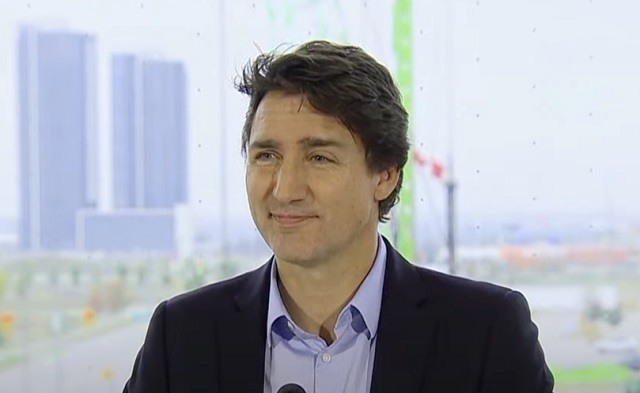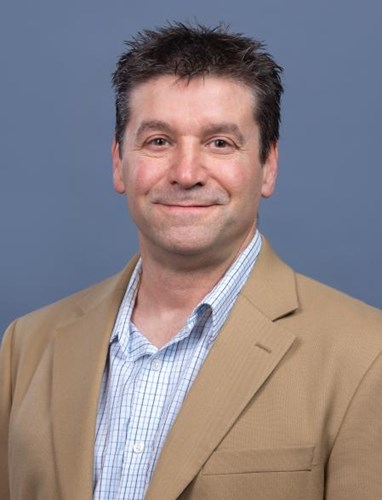Health
WHO’s Global Digital Health Certification Network
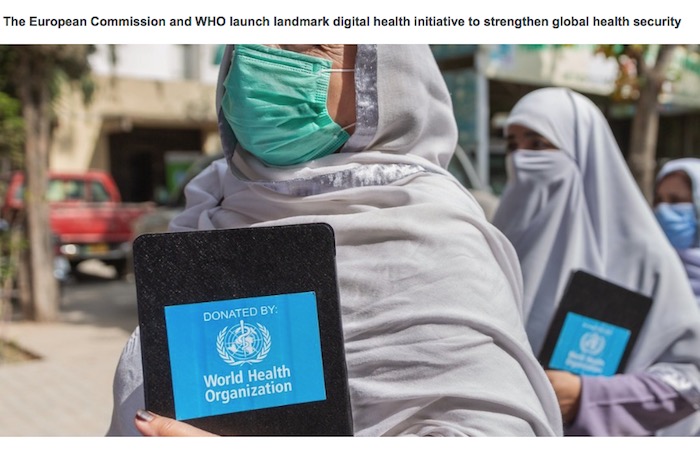
With notes from the World Health Organization website, Dr. John Campbell explains the WHO’s Global Digital Health Certification Network. To see the WHO’s press release click here or scroll below the video where it is attached.
From the youtube channel of  Dr. John Campbell
Dr. John Campbell
Press release from the World Health Organization
The European Commission and WHO launch landmark digital health initiative to strengthen global health security
The World Health Organization (WHO) and European Commission have announced today the launch of a landmark digital health partnership.
In June 2023, WHO will take up the European Union (EU) system of digital COVID-19 certification to establish a global system that will help facilitate global mobility and protect citizens across the world from on-going and future health threats, including pandemics. This is the first building block of the WHO Global Digital Health Certification Network (GDHCN) that will develop a wide range of digital products to deliver better health for all.
“Building on the EU’s highly successful digital certification network, WHO aims to offer all WHO Member States access to an open-source digital health tool, which is based on the principles of equity, innovation, transparency and data protection and privacy,” said Dr Tedros Adhanom Ghebreyesus, WHO Director-General. “New digital health products in development aim to help people everywhere receive quality health services quickly and more effectively”.
Based on the EU Global Health Strategy and WHO Global strategy on digital health, the initiative follows the 30 November 2022 agreement between Commissioner Kyriakides and Dr Tedros to enhance strategic cooperation on global health issues. This further bolsters a robust multilateral system with WHO at its core, powered by a strong EU.
“This partnership is an important step for the digital action plan of the EU Global Health Strategy. By using European best practices we contribute to digital health standards and interoperability globally—to the benefit of those most in need. It is also a powerful example of how alignment between the EU and the WHO can deliver better health for all, in the EU and across the world. As the directing and coordinating authority on international health work, there is no better partner than the WHO to advance the work we started at the EU and further develop global digital health solutions,” said Stella Kyriakides, Commissioner for Health and Food Safety.
This partnership will include close collaboration in the development, management and implementation of the WHO GDHCN system, benefitting from the European Commission’s ample technical expertise in the field. A first step is to ensure that the current EU digital certificates continue to function effectively.
“With 80 countries and territories connected to the EU Digital COVID-19 Certificate, the EU has set a global standard. The EU certificate has not only been an important tool in our fight against the pandemic, but has also facilitated international travel and tourism. I am pleased that the WHO will build on the privacy-preserving principles and cutting-edge technology of the EU certificate to create a global tool against future pandemics,” added Thierry Breton, Commissioner for Internal Market.
A global WHO system building on EU legacy
One of the key elements in the European Union’s work against the COVID-19 pandemic has been digital COVID-19 certificates. To facilitate free movement within its borders, the EU swiftly established interoperable COVID-19 certificates (entitled ‘EU Digital COVID-19 Certificate’ or ‘EU DCC’). Based on open-source technologies and standards it allowed also for the connection of non-EU countries that issue certificates according to EU DCC specifications, becoming the most widely used solution around the world.
From the onset of the pandemic, WHO engaged with all WHO Regions to define overall guidelines for such certificates. To help strengthen global health preparedness in the face of growing health threats, WHO is establishing a global digital health certification network which builds upon the solid foundations of the EU DCC framework, principles and open technologies. With this collaboration, WHO will facilitate this process globally under its own structure with the aim to allow the world to benefit from convergence of digital certificates. This includes standard-setting and validation of digital signatures to prevent fraud. In doing so, WHO will not have access to any underlying personal data, which would continue to be the exclusive domain of governments.
The first building block of the global WHO system becomes operational in June 2023 and aims to be progressively developed in the coming months.
A long-term digital partnership to deliver better health for all
To facilitate the uptake of the EU DCC by WHO and contribute to its operation and further development, WHO and the European Commission have agreed to partner in digital health.
This partnership will work to technically develop the WHO system with a staged approach to cover additional use cases, which may include, for example, the digitisation of the International Certificate of Vaccination or Prophylaxis. Expanding such digital solutions will be essential to deliver better health for citizens across the globe.
This cooperation is based on the shared values and principles of transparency and openness, inclusiveness, accountability, data protection and privacy, security, scalability at a global level, and equity. The WHO and the European Commission will work together to encourage maximum global uptake and participation. Particular attention will be paid to equitable opportunities for the participation by those most in need: low and middle-income countries.
Dr. John Campbell’s Presentation notes:
WHO’s Global Digital Health Certification Network https://www.who.int/initiatives/globa…
WHO has established the Global Digital Health Certification Network (GDHCN). Open-source platform, built on robust & transparent standards, that establishes the first building block of digital public health infrastructure, for developing a wide range of digital products, for strengthening pandemic preparedness
Background Member States used digital COVID-19 test and vaccine certificates As the directing and coordinating authority on international health work, at the onset of the pandemic, WHO engaged with all WHO Regions to define overall guidance for such certificates and published the Digital Documentation of COVID-19 Certificates
https://www.who.int/publications/i/it… https://www.who.int/publications/i/it… there is a recognition of an existing gap, and continued need for a global mechanism, that can support bilateral verification of the provenance of health documents
The GDHCN may include Digitisation of the International Certificate of Vaccination or Prophylaxis, verification of prescriptions across borders
International Patient Summary Verification of vaccination certificates within and across borders Certification of public health professionals (through WHO Academy) Expanding such digital solutions will be essential to deliver better health for people across the globe.
The GDHCN has been designed to be interoperable with other existing regional networks EU-WHO digital partnership https://www.who.int/news/item/05-06-2… ![]() • LIVE: WHO and @EU… https://commission.europa.eu/strategy… WHO and the European Commission have agreed to partner in digital health.
• LIVE: WHO and @EU… https://commission.europa.eu/strategy… WHO and the European Commission have agreed to partner in digital health.
This partnership will work to technically develop the WHO system with a staged approach to cover additional use cases, In June 2023, WHO will take up the European Union (EU) system of digital COVID-19 certification to establish a global system, that will help facilitate global mobility
This is the first building block of the WHO Global Digital Health Certification Network (GDHCN)
Dr Tedros Adhanom Ghebreyesus WHO aims to offer all WHO Member States access, On the principles of equity, innovation, transparency and data protection and privacy Stella Kyriakides, Commissioner for Health and Food Safety
This partnership is an important step for the digital action plan of the EU Global Health Strategy, we contribute to digital health standards and interoperability globally
Thierry Breton, Commissioner for Internal Market The EU certificate … has also facilitated international travel and tourism I am pleased that the WHO will build on …. cutting-edge technology … to create a global tool against future pandemics
One of the key elements in the European Union’s work against the COVID-19 pandemic has been digital COVID-19 certificates. WHO will facilitate this process globally under its own structure … allow the world to benefit from convergence of digital certificates. Expanding such digital solutions will be essential to deliver better health for citizens across the globe.
The WHO and the European Commission will work together to encourage maximum global uptake and participation.
Addictions
Liberal MP blasts Trudeau-backed ‘safe supply’ drug programs, linking them to ‘chaos’ in cities

First responders in Ottawa dealing with a crisis Fridayman 0102 / YouTube
From LifeSiteNews
‘There is certainly the perception by a lot of Canadians that a lot of downtown cores are basically out of control,’ Liberal MP Dr. Marcus Powlowski said, before pointing specifically to ‘safe supply’ drugs and injection sites.
A Liberal MP has seemingly taken issue with “safe supply” drug policies for increasing public disorder in Canada, policies his own party, under the leadership of Prime Minister Justin Trudeau, has endorsed.
During an April 15 health committee meeting in the House of Commons, Liberal MP Dr. Marcus Powlowski, while pressing the Royal Canadian Mounted Police (RCMP), stated that “safe supply” drug policies have caused Canadians to feel unsafe in downtown Ottawa and in other major cities across the country.
“There is certainly the perception by a lot of Canadians that a lot of downtown cores are basically out of control,” Powlowski said.
“Certainly there is also the perception that around places like safe supply, safe injection sites, that things are worse, that there are people openly stoned in the street,” he continued.
“People are getting cardio-pulmonary resuscitation performed on them in the street. There are needles around on the street. There is excrement on the street,” Powlowski added.
“Safe supply“ is the term used to refer to government-prescribed drugs that are given to addicts under the assumption that a more controlled batch of narcotics reduces the risk of overdose – critics of the policy argue that giving addicts drugs only enables their behavior, puts the public at risk, disincentivizes recovery from addiction and has not reduced, and sometimes even increased, overdose deaths where implemented.
Powlowski, who has worked as an emergency room physician, also stated that violence from drug users has become a problem in Ottawa, especially in areas near so-called “safe supply” drug sites which operate within blocks of Parliament Hill.
“A few months ago I was downtown in a bar here in Ottawa, not that I do that very often, but a couple of colleagues I met up with, one was assaulted as he was going to the bar, another one was threatened,” said Powlowski.
“Within a month of that I was returning down Wellington Street from downtown, the Rideau Centre, and my son who is 15 was coming after me,” he continued. “It was nighttime and there was someone out in the middle of the street, yelling and screaming, accosting cars.”
Liberal MP Dr. Brendan Hanley, the Yukon’s former chief medical officer, testified in support of Powlowski, saying, “My colleague Dr. Powlowski described what it’s like to walk around downtown Ottawa here, and certainly when I walk home every day, I encounter similar circumstances.”
“Do you agree this is a problem?” Powlowski pressed RCMP deputy commissioner Dwayne McDonald. “Do you agree for a lot of Canadians who are not involved with drugs, that they are increasingly unhappy with society in downtown cores which are this way? Do you want to do more about this, and if you do want to do more about this, what do you need?”
McDonald acknowledged the issue but failed to offer a solution, responding, “One of the success factors required for decriminalization is public support.”
“I think when you are faced with situations where, as we have experienced in our communities and we hear from our communities, where public consumption in some places may lead to other members of the public feeling at risk or threatened or vulnerable to street level crime, it does present a challenge,” he continued.
Deaths from drug overdoses in Canada have gone through the roof in recent years, particularly in British Columbia after Trudeau’s federal government effectively decriminalized hard drugs in the province.
Under the policy, which launched in early 2023, the federal government began allowing people within the province to possess up to 2.5 grams of hard drugs without criminal penalty, but selling drugs remained a crime.
The policy has been widely criticized, especially after it was found that the province broke three different drug-related overdose records in the first month the new law was in effect.
The effects of decriminalizing hard drugs in various parts of Canada has been exposed in Aaron Gunn’s recent documentary, Canada is Dying, and in U.K. Telegraph journalist Steven Edginton’s mini-documentary, Canada’s Woke Nightmare: A Warning to the West.
Gunn says he documents the “general societal chaos and explosion of drug use in every major Canadian city.”
“Overdose deaths are up 1,000 percent in the last 10 years,” he said in his film, adding that “[e]very day in Vancouver four people are randomly attacked.”
Health
‘Shocking cover-up’: DOJ lawyers committed fraud in vaccine injury case, CHD attorney alleges in motion

From LifeSiteNews
By Brenda Baletti, Ph.D., The Defender
“The evidence submitted in support of the motion clearly shows that attorneys from the Department of Justice concealed and misrepresented highly relevant information from the special masters in the Vaccine Injury Compensation Program and the judges in the courts”
Rolf Hazlehurst, a Children’s Health Defense (CHD) staff attorney and father of a son with autism, filed a motion in federal court on April 2 alleging lawyers representing the U.S. Department of Health and Human Services (HHS) fraudulently concealed evidence that vaccines can cause autism.
In a motion filed in the U.S. Court of Federal Claims, Hazlehurst alleged that U.S. Department of Justice (DOJ) lawyers who represented HHS in vaccine injury cases repeatedly defrauded the judicial system – from the National Vaccine Injury Compensation Program (NVICP) to the U.S. Supreme Court.
That fraud led to thousands of families of vaccine-injured children being denied the right to compensation and the right to have their cases heard, according to the motion.
“This motion makes very serious and well-substantiated allegations of a massive scheme of fraud on the courts,” said Kim Mack Rosenberg, CHD general counsel who also is of counsel to Hazlehurst in the federal case.
“The evidence submitted in support of the motion clearly shows that attorneys from the Department of Justice concealed and misrepresented highly relevant information from the special masters in the Vaccine Injury Compensation Program and the judges in the courts,” Mack Rosenberg told The Defender.
Hazlehurst’s son Yates regressed into autism after being vaccinated as an infant. In the early 2000s, his family and thousands of others filed cases seeking compensation for vaccine-induced autism through the NVICP.
The program consolidated all of the petitions into the Omnibus Autism Proceeding (OAP) and selected six representative “test cases” – of which Yates’ was the second – as the basis for determining the outcome of the remaining 5,400 cases.
Unbeknownst at the time to the petitioners and the NVICP special masters, the DOJ’s star expert medical witness, Dr. Andrew Zimmerman informed DOJ attorneys during the ongoing omnibus proceedings that he had reversed his original opinion and determined that vaccines can and do cause autism in some cases.
In what Hazlehurst alleges was “a shocking cover-up,” instead of allowing Zimmerman to share his revised opinion, the DOJ attorneys relieved Zimmerman of his duties as a witness.
However, they continued to use excerpts from his unamended written opinion to make their case that vaccines did not cause autism – misrepresenting his position and committing “fraud on the court.”
According to the motion, the DOJ’s first act of fraud snowballed into a scheme of deception with far-reaching implications in which DOJ attorneys repeatedly misrepresented Zimmerman’s opinion and concealed other evidence that emerged during the test case hearings in the OAP in subsequent cases before multiple courts.
“As a result, thousands of cases in the Omnibus Autism Proceeding were denied compensation and the impact beyond the OAP is enormous,” Mack Rosenberg said. “This fraud affected the Vaccine Injury Compensation Program – especially the Omnibus Autism Proceeding – the Court of Federal Claims, the Court of Appeals for the Federal Circuit and even the U.S. Supreme Court.”
Hazlehurst said he is “asking the court to give this motion the serious attention it deserves.” He added, “At a minimum, the court should allow discovery and hold a hearing on this motion.”
Overturning a ruling due to fraud on the court is an extraordinary remedy reserved for extraordinary cases but according to Hazlehurst, “This motion we filed shows that this indeed is an extraordinary case.”
The DOJ has until April 30 to respond to the motion.
CHD CEO Mary Holland told The Defender, “Vaccines most definitely do cause autism, and the government has been lying about this reality for decades.”
Holland added:
With others, I published a law review article in 2011 showing that the government absolutely knew that vaccines cause autism – and yet they have covered it up and lied about it since the inception of the Vaccine Injury Compensation Program.
How many hundreds of thousands of children and families would have been spared the heartaches and crushing financial burdens of autism had the government come clean?
‘Exceptionally difficult’ to obtain compensation through NVICP
In the late 1980s, a substantial number of lawsuits for vaccine injuries related to Wyeth’s (now Pfizer) DPT vaccine, combined with “grossly insufficient compensation” for victims of vaccine injury, threatened the vaccine program’s viability.
In response, Congress passed the National Childhood Vaccine Injury Act of 1986, which established the “vaccine court.” The law gave the pharmaceutical industry broad protection from liability and proposed to compensate vaccine-injured children through the new NVICP.
The NVICP originally was designed to be a “swift, flexible, and less adversarial alternative to the often costly and lengthy civil arena of traditional tort litigation.”
To receive compensation, parents file a claim with the program.
The Court of Federal Claims (which oversees the program) appoints “special masters” – typically lawyers who previously represented the U.S. government – to manage and decide the individual claims. Attorneys may represent the petitioners, and the DOJ represents HHS.
NVICP proceedings are more informal than a typical courtroom. Unlike regular court proceedings, petitioners in the “vaccine court” have no right to discovery.
If a petitioner files a claim for a vaccine covered under the program and listed on the Vaccine Injury Table – the list of known vaccine side effects associated with certain vaccines within set time frames – it is presumed that a vaccine caused the petitioner’s injury and the petitioner is eligible for compensation without proof of causation.
However, if a petitioner experiences an “off-table injury” – an injury not listed on the table or that didn’t happen in the recognized injury time frame – the petitioner must prove by “a preponderance of evidence” that the vaccine caused the injury. Evidence includes medical records and expert witness testimony.
Claims must be filed within three years of the first symptom or two years of death.
Petitioners must provide a medical theory of the cause, a sequence of cause and effect, and show a temporal relationship between vaccine and injury.
However, the NVICP does not specify the required volume and type of evidence, so meeting the “preponderance of evidence” standard is largely at the discretion of the special master.
Petitioners can appeal NVICP cases to the Court of Federal Claims, the Court of Appeals for the Federal Circuit and ultimately to the U.S. Supreme Court.
It is “exceptionally difficult” to obtain compensation within the NVICP, Hazlehurst told The Defender. The proceedings are often turned into drawn-out, contentious expert battles and the backlog of cases is substantial.
The Vaccine Act of 1986 is unjust for petitioners, Hazlehurst alleges. And that injustice reached its zenith with the OAP, when the DOJ perpetrated fraud right under the noses of the special masters, signaling the beginning of the fraud on the courts that continues to this day.
Hazlehurst told The Defender he hopes his motion will shed light on the damage inflicted by this law and that it will ultimately help end the autism epidemic.
“The Vaccine Act of 1986 is one of the fundamental causes of the autism epidemic,” Hazlehurst said. “Understanding why this is true, and how the United States Department of Justice perpetrated fraud upon the courts, including the Supreme Court of the United States, is the key to ending the autism epidemic.”
A short history of the autism omnibus proceedings
By 2002, to address a “massive influx” of petitions alleging vaccine-induced autism, the Office of Special Masters combined over 5,000 claims into the OAP to determine whether vaccines cause autism and if so, under what conditions.
Initially, the NVICP planned to investigate causation issues and apply those general findings to individual cases. However, the program changed its strategy and instead selected six “test cases” by which it would examine the evidence for injuries caused by the measles mumps rubella (MMR) vaccine, thimerosal-containing vaccines (TCV), or a combination of both.
Then it would apply the findings of the test cases to other similar cases.
In doing so, Hazlehurst alleges, the court conflated general causation evidence with specific causation evidence from a few cases, without allowing for rules of discovery or evidence that would apply in an actual court.
This, Hazlehurst said, “was a recipe for disaster” as each test case was then used to determine the outcome for the remaining 5,000 cases.
Three cases – Cedillo v. HHS, Hazlehurst v. HHS, and Poling v. HHS – are at the center of the alleged fraud by the DOJ.
Fraud #1: the Zimmerman testimony
Hearings for the first OAP test case, Cedillo v. HHS, began in 2007. Zimmerman had worked with the DOJ to prepare an expert report on behalf of HHS finding that Michelle Cedillo’s autism had likely not been caused by the MMR vaccine.
Zimmerman later wrote in a 2018 affidavit that he attended the Cedillo hearing and listened to the testimony of Dr. Marcel Kinsbourne, another world-renowned expert in pediatric neurology.
On that basis, Zimmerman stated, he decided to clarify his written expert opinion about Michelle Cedillo, concerned it would be taken out of context.
Zimmerman spoke with DOJ attorneys to clarify that his expert opinion in the Cedillo case “was not intended to be a blanket statement as to all children and all medical science,” according to the 2018 affidavit.
He specified that advances in science, medicine and his own clinical research had led him to believe there were exceptions in which vaccinations could cause autism.
He also referred the attorneys to a paper he published with colleagues in 2006, the Poling paper, describing the case of an unidentified child who suffered regressive autism following vaccine adverse reactions. The paper suggested a possible association between mitochondrial dysfunction, vaccinations and regressive autism.
After communicating this evidence to DOJ attorneys, the DOJ dismissed Zimmerman as a witness but continued to use his written opinion as general causation evidence.
The DOJ was also allowed to use that report, submitted in one test case, as general causation evidence in other test cases.
None of the petitioners in the test cases could cross-examine Zimmerman, because he was no longer a witness. This was only possible because the federal rules of evidence do not apply in NVICP proceedings.
Yates’ case, Hazlehurst v. HHS, was the second test case in the OAP. His treating neurologist, Dr. Jean-Ronel Corbier testified Yates’ autism was likely caused by a genetic predisposition combined with an environmental insult in the form of vaccinations administered when Yates was ill. (Yates was a patient of Zimmerman in 2002.)
Corbier’s theory of causation in Yates was similar to the theory developed by Zimmerman in the Poling paper and shared with DOJ attorneys.
Yet, despite knowing Zimmerman had concluded that in a subset of children like Yates, vaccines can cause autism, the DOJ “intentionally and fraudulently” misrepresented Zimmerman’s expert testimony in its closing statements in Yates’ case, Hazlehurst alleges.
DOJ attorneys selectively quoted Zimmerman’s expert report from the Cedillo case, telling the court that Zimmerman found there was “no sound evidence to support a causative relationship with exposure to both or either MMR and/or mercury,” when Zimmerman had explicitly told the DOJ that his opinion was the opposite, according to the affidavit.
Fraud #2: the Hannah Poling case
Three weeks after closing arguments in Yates’ case, the DOJ quietly conceded Hannah Poling’s case, which was on the verge of becoming the fourth test case.
Hannah regressed into autism over several months after being vaccinated against nine diseases at one doctor’s visit.
In 2003, Poling’s father, Jon, a physician and trained neurologist, and mother, Terry, an attorney and nurse, filed an autism petition against HHS under the NVICP for their daughter’s injuries.
Jon Poling was a co-author of the 2006 paper with Zimmerman that analyzed an unnamed child, later revealed as Hannah Poling, who had a mitochondrial disorder – a condition with which Yates was later diagnosed.
In 2007, just three weeks after the lead DOJ attorney misrepresented Zimmerman’s opinion during the hearing in Hazlehurst, the same DOJ attorney submitted a report to the special masters conceding that in the case of Poling v. HHS, Hannah’s “regressive encephalopathy with features of autism spectrum disorder” (i.e., regressive autism) was caused by a vaccine injury, based upon a preponderance of the evidence standard.
This was the same neurological diagnosis Zimmerman had made for Yates in 2002.
According to court documents, if HHS had not conceded Poling, Poling v. HHS would have been designated as a test case. However, because the DOJ conceded the case, it was taken out of the omnibus and the DOJ had the case records sealed – although they were later leaked to the press and published in the Huffington Post in 2008.
In March 2008, Hannah’s parents moved to make the proceedings transparent and available to the public, but the DOJ opposed the motion and the NVICP deferred a ruling on the motion for 60 days.
During those 60 days, the DOJ filed amendments to its report conceding the Poling case. It retroactively changed the basis for compensation to say that Hannah had a “table injury.”
This meant that instead of conceding that the petitioners had proven with a preponderance of evidence that the vaccines caused her autism, they said she had a presumptive injury on the vaccine table, in which causation is presumed.
By conceding the Poling case, opposing the parents’ motion for complete transparency and changing the basis for compensation, the DOJ was able to conceal fraud and critical material evidence of how vaccines cause autism, according to Hazlehurst.
Fraud #3: appellate courts and the U.S. Supreme Court
On Feb. 12, 2009, the special masters denied compensation in the first three cases. They found the petitioners failed to establish causation between MMR or TCV vaccines and autism.
In Hazlehurst’s case, the NVICP explicitly relied on the portion of Zimmerman’s expert report that DOJ attorneys misrepresented.
The Hazlehursts appealed to the Court of Federal Claims and the Court of Appeals for the Federal Circuit, both of which upheld the special master’s decision – by relying on Zimmerman’s misrepresented opinion and knowingly fraudulent statements made by a DOJ attorney, according to Hazlehurst.
Those prior decisions directly influenced the U.S. Supreme Court’s decision in the Bruesewitz v. Wyeth.
In that case, Wyeth, now Pfizer, argued that a decision favoring the Bruesewitz family – who was attempting to sue the company for their daughter’s vaccine injury – would lead to a “flood of frivolous lawsuits,” including by the families from the omnibus.
Amicus briefs from the American Academy of Pediatrics, GlaxoSmithKline, Merck and Sanofi Pasteur on behalf of Wyeth relied on Hazlehurst v. HHS and other OAP decisions that were based on the misrepresentation of Zimmerman’s testimony that there was “no scientific basis” that vaccines cause autism.
The Supreme Court ruled that the National Childhood Vaccine Injury Act, and the NVICP it created, preempt all design-defect claims against vaccine manufacturers by individuals seeking compensation for injury or death.
In oral arguments and in their written opinions, the justices explicitly cited the portions of the amicus briefs citing Hazlehurst v. HHS and other OAP rulings that relied on the DOJ misrepresentations in their rulings.
Since that ruling, the special masters have continued to rely on the DOJ’s fraudulent claims to deny compensation to families filing complaints in the NVICP.
Robert F. Kennedy Jr., CHD chairman on leave, and Hazlehurst in September 2018 filed a complaint with the DOJ Office of Inspector General outlining what they then knew about the DOJ’s fraud during the OAP.
The DOJ Office of Professional Misconduct investigated and responded in a June 2019 letter that it found no wrongdoing.
In that letter, however, the Office of Professional Responsibility conceded the DOJ had in fact kept Zimmerman’s testimony while dismissing him as a witness in order to avoid creating the appearance that he had changed his opinion and to prevent the petitioners from cross-examining him, according to Hazlehurst.
The ‘fraud on the court’ doctrine
It has taken 17 years, Hazlehurst said, since the DOJ’s first alleged act of fraud upon the court, for him to gather all of the admissible evidence necessary to “connect the dots and reveal the DOJ’s web of deceit” to make this claim under the “fraud on the court” doctrine.
Under this doctrine, codified as Rule 60(d)(3) in the rules of the Court of Federal Claims, there is no time limit for the court to overturn a judgment made on the basis of fraud on the court.
The petitioner must demonstrate that there was fraud, intent to defraud and that the fraud affected more than one instance of litigation – putting the integrity of the judicial process at stake.
Hazlehurst alleges DOJ attorneys committed fraud by knowingly making false statements and offering evidence they knew to be false and that they did not take remedial action to disclose information they knew to be false and misleading to the court.
The special masters themselves have an obligation to consider all relevant evidence, but didn’t, in this case, Hazlehurst said. Instead, they ignored the contradictions in Zimmerman’s opinions and ignored the Poling evidence.
This is particularly problematic for NVICP cases, where petitioners can’t conduct meaningful discovery or cross-examination and the special masters’ oversight is the only meaningful safeguard to prevent the DOJ’s abuse of power, according to Hazlehurst.
“There is nothing fair about a government proceeding where the government controls the admissibility of evidence,” he said.
Hazlehurst said that by forcing people injured by vaccines into an administrative program, petitioners are deprived of the basic constitutional rights to due process and equal protection under the law. “It should be declared unconstitutional,” he said.
This article was originally published by The Defender — Children’s Health Defense’s News & Views Website under Creative Commons license CC BY-NC-ND 4.0. Please consider subscribing to The Defender or donating to Children’s Health Defense.
-
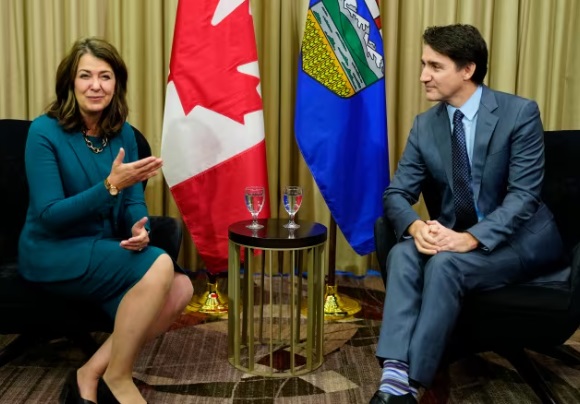
 Alberta2 days ago
Alberta2 days agoFree Alberta Strategy backing Smith’s Provincial Priorities Act
-

 Business2 days ago
Business2 days agoUS firms like BlackRock are dropping their climate obsession while Europe ramps theirs up
-

 Automotive2 days ago
Automotive2 days agoBiden’s Kill Switch: The Growing Threat of Government Control of Your Car
-

 COVID-191 day ago
COVID-191 day agoPro-freedom Canadian nurse gets two years probation for protesting COVID restrictions
-
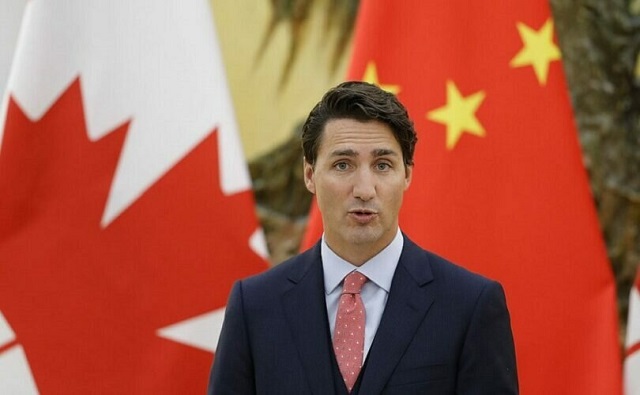
 espionage1 day ago
espionage1 day agoTrudeau’s office was warned that Chinese agents posed ‘existential threat’ to Canada: secret memo
-

 Economy1 day ago
Economy1 day agoMassive deficits send debt interest charges soaring
-

 International17 hours ago
International17 hours agoBrussels NatCon conference will continue freely after court overturns police barricade
-
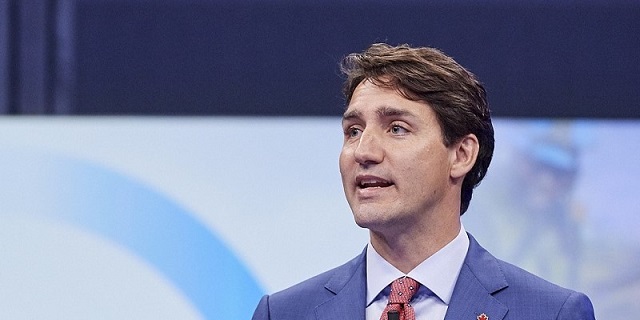
 Business17 hours ago
Business17 hours agoFederal budget fails to ‘break the glass’ on Canada’s economic growth crisis




